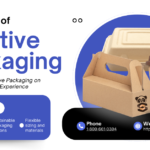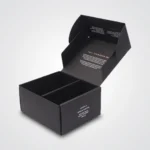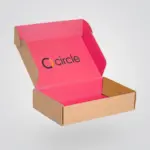Optimizing E-Commerce Packaging for Seamless Deliveries
E-Commerce Packaging at online marketplaces has much more essential work to deliver than the simple effort of protecting and wrapping a product. It is like the first hello from a brand long before you get to see what you bought. Walking into a store or ordering lunch at a marketplace, people dream.
Did you know that 67 percent of US citizens say that the packaging material significantly impacts their purchasing decision? Quite some value there! It really goes to show just how much the box, the material, and the design can literally tip the scale one way or another when it actually comes to someone making a purchase. In the next moments, this article will undertake to review how e-commerce packaging can be used to elevate brand image and the smooth functioning of the supply chain, all through a bit of additional effort.
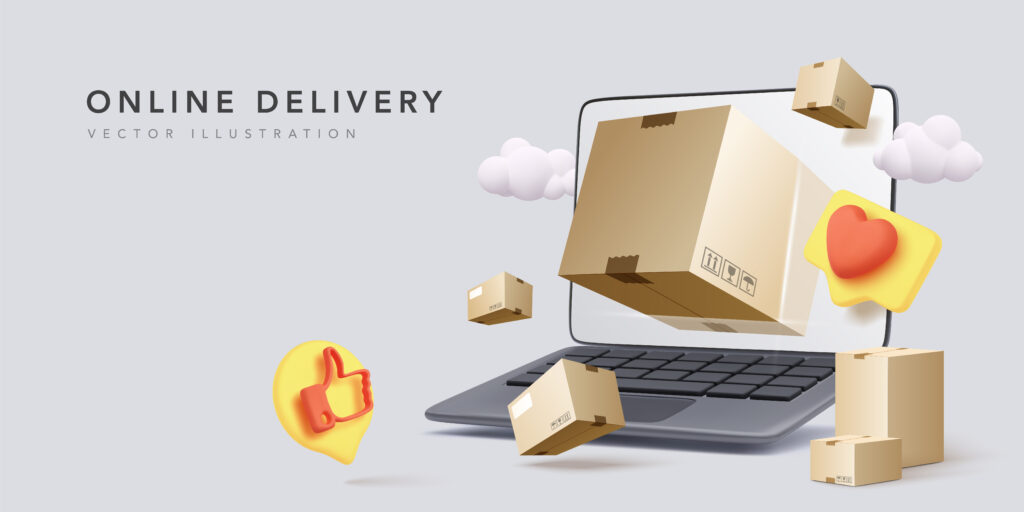
The Importance of Packaging in E-Commerce
Within online shopping, packing is no longer just a box or envelope; it has become an integral part of your brand. So, let’s take a look at how e-commerce packaging affects our shopping behavior and why it is necessary for businesses to make that right.
Understanding the Role of Ecommerce Packaging
E-commerce packaging isn’t merely putting a product on a shipment; this is the very first opportunity a brand will actually engage the customer. The instant the package is placed in a customer’s hand, it symbolizes that brand’s identity and values. Good packaging protects the product, but it also begins an interaction with the customer.
It is the whole idea of a packaging experience: Creating that unboxing experience is more than just an act of receiving an item; it’s a high point for the customer to share on social media, thus growing your brand’s exposure. Offering a personalized touch with customized packaging or some nice surprises inside for the customer will go a long way in making them feel good about themselves. This feel-good factor keeps them remembering your brand and makes them want to come back.
Additionally, growing concerns for the environment have made discussion of this alternative sustainable packaging an enormous issue. Eco-friendly means the packaging is either made from recycled materials or made for reuse, lending a brand’s commitment to sustainability.
This goes on to further strengthen the brand image and position in the market.
Impact of Packaging on Customer Unboxing Experience
To an extent, customers feel good or bad about what they have bought based on the look and feel of the package upon arrival. Think about it: receiving something in the post, and a very clear and elegant product package sits very well with you even before opening it and finding out what is inside. This has made companies really deem the unboxing experience important. For the customer to enjoy the unpacking experience, the boxes should be visually appealing, the brand logo should be printed on the packaging, and there ought to be little extra surprises inside.
When customers unbox any package to find the products safely secured in eco-friendly packaging materials, they have the feeling that the company cares about its product and the planet, thus making them feel good about their purchase. At this point, they will be more motivated to share about their experience online, which is a big plus for the brand.
From packing to couriering, this will give the customer the impression that this brand values its relationship and is conscious of the delicacy of its products, thus implying a level of appreciation that encourages a second sale. Thus, companies using eco-friendly material show an equal concern about the environment and the consumer.A socially conscious initiative like this will certainly take the brand to high respect and regard in the market.
Eco-Friendly E-Commerce Packaging Solutions for Sustainability
Investing in eco-friendly packaging is an enormous first step into being a better world citizen for any online business. By definition, these are basically materials safe for the earth: recycled packaging is often mentioned as an illustration. The aim is to send products in ways that are environmentally friendly. Customers today look for this packaging option too. They want to feel great about the products they buy and where they came from.
There are many sustainable packaging choices out that businesses can consider; for instance, boxes and mailers that have a lower contribution to landfill waste by being recyclable or compostable. The other would be to pack less and waste less. Material is only a part of it. Innovation involves packing things in ways that aim to take less space and allow for more efficient delivery. Decreasing shipping costs is an added benefit, helping in cutting down the carbon footprint of delivering products to the doorsteps of their buyers.
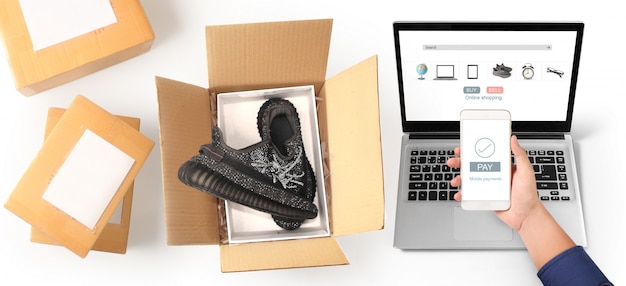
Green packaging benefits the environment and enhances the business image. The modern consumer is increasingly eco-conscious and tends to support brands that resonate with their green beliefs. In addition to these advantages, eco-friendly packaging is capital-efficient for materials and shipping, combining the benefits of earth-saving with customer satisfaction.
Challenges in E-Commerce Product Packaging
E-commerce product packaging has its challenges. Designing custom boxes for an array of product sizes and shapes can get challenging. Let’s examine some common challenges companies face and how they manage to overcome them.
Custom Packaging Solution for Diverse Product Types
Custom packaging presents a complicated challenge for e-commerce. They must arrange for products that vary greatly in size and shape in an attempt to minimize waste and optimize space. Such a work would have been easier had time and cost-efficient methods been available. In addition, businesses can follow the inventory system with a customized free inventory management solution.”
There must also be some fitting and good-looking going on once the product arrives. Customers expect their orders to come in packaging that feels special and tailored to what they bought. This will force the firm to sometimes keep many types of packaging: small mailer boxes for tiny items and larger corrugated boxes for the bigger products. To keep packaging materials ready adds complexity and can put an extra cost on the firm.
Yet, the custom needs for packaging stand in opposition to the speed and eco-friendliness that is needed and expressed by customers. Companies must move fast in getting goods into the hands of customers, but in a way that cares for the planet. This entails creative application of recycled cardboard and biodegradable fillers to cushion things, regardless of their shape or size, while looking at eco-friendliness. In handling this issue are critical to businesses that plan to succeed in the e-commerce industry.
Ensuring Product Safety During Transit
Protecting products in transport presents quite a challenge within the e-commerce industry. The arduous journey begins when an item leaves the warehouse and ends up in the customers’ hands. An item is hopefully placed in a truck, jostling around the whole way to an airplane, and suffering from numerous bumps and scratches. The companies must ensure their packaging withstands this journey, keeping everything in safe and sound. This requires the right choice of packaging materials and designs that protect from drops, shakes, and everything else that occurs during transit.
Then, it is not only about making sure the product reaches there without a scratch; this expensive packaging-monopoly included-also costs a lot.The cost and bulk of the package are affected by heavy-duty packing materials such as thick cardboard, bubble wrap, or any kind of cushioning. Maintaining the balance between the right protection and costs becomes quite a juggling act for ecommerce business persons.
Finally, sustainable practices are now in demand, putting even more pressure on this product protection equation. Packaging is now-a-days being demanded by consumers to be eco-friendly as well as protect the product. Hence companies strive hard to get creative in finding packaging solutions that are eco-friendly yet transportable. Finding the right balance is a difficult act; for companies, however, it is vital in keeping the customer happy and willing to come back for more.
Balancing Protection With Cost-Effectiveness in E-Commerce Package Design
A vital concern for any e-commerce company is to keep its products intact on its road to the customer. Packages during shipping suffer quite a few tormentors: from being subject to rough handling to being dropped or thrown accidentally. The crux of the matter is, how to make sure that every single item delivered is in mint condition, regardless of the hurdles it has managed to withstand during its way?
The successful businesses are those that achieve this goal by selecting the right box. You need to have a thorough plan that integrates protective materials, alongside an intelligent design for packaging. Each choice is critical to the entire packing process-whether for bubble wrapping a delicate product or packaging heavier items in strong corrugated.
Still, getting it right is something of an art and science. It requires great attention to detail and, more importantly, an understanding of the types of mold that can survive the transit nightmare. Cushioning is not the key word; the key is building a packaging experience that renders complete satisfaction to the customer the moment they close the box. In such a case, financial management tools for cost-effective packaging solutions are invaluable.
These tools can guide firms to analyze their packaging-related cost considerations while ensuring that their packaging design offers just enough protection for the products while allowing them to manage their resources wisely and control operational costs. The discussion on how firms will be able to stand to its challenge in here would go on to help light the path of delivering products safely and successfully.
Strategies for Efficient Ecommerce Packaging
E-commerce packaging involves much more than just putting things in a box; rather, it encompasses choosing wisely for profit, ecological reasons, and pleasing one’s customer. Here are a few strategies to help you refine the packaging process.
Right-sized Packaging for Reduced Waste
Choosing the right packaging size is akin to picking the right attire for a special occasion. It should fit perfectly, avoiding anything that is excessive. Boxes and mailers must be chosen to fit your product snugly, so no extra packaging material or filling is needed. This tackles waste directly, reducing material use and shipping costs.
By wedging your product into the perfect packaging size, you can save a lot of money while enhancing customer experience. It’s a simple, sensible approach: to minimize wastage, cut down shipping costs, and please the customer. When your packaging fits properly, it demonstrates care on your part. Care for every detail from the safety of the product to its environmental impact.
Utilizing Eco-Friendly Materials
Notably, eco-packaging materials favor both the earth and customers focused on sustainability. Using alternate packing materials such as recycled cardboard and biodegradable packing peanuts can create a favorable brand image while minimizing the carbon footprint of the concerned company.
The scope of being environmental-friendly is very broad and encompasses other options like corrugated boxes and mailers made from plant-based biopolymers. All these products give the impression of a company that genuinely cares about Mother Earth without compromising on their products’ packaging and aesthetic protection. In these types of design, potentially a bit flashy and innovative, one step up would highlight the entire unboxing experience and give purchasing consumers a feeling of pride in their choice-one that resonates with your brand.
Implementing Automation in Packaging Processes
An automated packaging system means having a better-than-employee assistant with you. It increases speed, accuracy, and economy through technology. Machines quickly size, fill, and seal the packages with little or no human interference. This makes it easier and faster to get products ready for shipping while scaling up order handling without breaking a sweat.
The big advantage of automation is the way it minimizes errors. Whenever the machine does the measuring and packing, the chances of sending either a too-big or too-small package are very low. All this precision makes for material savings and cost savings, making the packaging process leaner and greener. Best of all, your customer receives an immaculately packed order in a nice box, which makes for a fantastic unboxing experience.
Setting up automation may seem a giant step, but it is worth every bit of that. No matter whether you are the little guy trying to grow or the big guy trying to control processes, automation fits into your plan. It complements your order intake, reduces waste, and makes life easier for your team. In today’s ever-changing cosmos, automated packaging processes may be a sale booster and thoroughfare advantage.
Integration with Supply Chain Management
Integration of packaging operations with supply chain management is critical to achieving seamless operations. It is smart planning and execution so that the packaging meets the demands of the product as well as the shipping strategy.
Coordination between Packaging and Logistics
An alignment of packaging with the logistics operations strategy, right from picking the packaging suitable for each product, should exist within companies. Whether a very strong corrugated box to protect a very fragile item or a simple lightweight mailer for clothes, packaging choice acts very heavily in influencing the product’s journey towards the customer’s doorstep. Protecting your items and minimizing shipping cost starts by making the proper selection.
You also ought to make sure that your packaging is compatible with your shipping system. If your are using standard shipping boxes, make sure they are the correct size. Anything larger than needed raises your shipping costs and adds tons of waste; any smaller risks damaging your products. So get that perfect balance between packaging fit and shipping efficiency.
Working collaboratively with your logistic operations is key for enhancing cohesion. When logistics guys are adequately informed about your packaging decisions, they shall make wiser decisions concerning stacking, storing, and shipping your goods. That teamwork minimizes errors and guarantees satisfied customers in seamless operations across the board.
Utilizing Data for Decision-Making
Data holds the key for any business in making appropriate decisions. Data analysis may hold the answer for reasons behind poor packaging. Perhaps the boxes are oversized, or the protective materials are not enough.
Once the data analysis is done, you can begin to test various packaging options or redesigns, depending on what the data is telling you. Ultimately, this will decrease damage, save costs, and keep customers happy. It’s mostly trial and error, but with data, you already have a much better chance of getting it right according to intuition.
Collaboration with Suppliers and Carriers
A good team works together with their suppliers and carriers. This means forging genuine relationships. When you work closely with suppliers, you can assure that they are providing the best age materials for you, not only regarding pricing but also about quality and reliability. You want to make certain that the packaging protects the product and is in keeping with your brand ideals of sustainability.
The relationship with carriers is equally important; otherwise, you may find yourself packaging products that do not suit their requirements, increasing the risk of breakages. Working together also entails deploying innovative ways such as optimizing packaging sizes so that for that one shipment, more products can be accommodated, which translates to cost savings and environmental conservation.
The cooperation is not only transactional; it is an interactive conversation through which buyers share feedback with sellers, the sellers share perspective on the customer base, and they collectively strategize for the future. This exchange affords the opportunity to anticipate and act accordingly. Therefore, providing collaborative intervention is likely to create an open-ended smooth supply chain into which all stakeholders will benefit.
Innovations in E-Commerce Packaging
The evolution of e-commerce, which not just changed how we buy but also transformed the packaging industry, is a view into the future. I’ll take you on a tour of the smart packaging technology and forecast the future of packaging.
Smart Packaging Technologies
The smart package technologies enhance the new horizon of innovation in the industry. These modern-day solutions include sensors, trackers, and even interactive features to make the package itself part of the customer experience.
Smart Packaging works wonders in giving real-time updates to customers and sellers. You can track your order from the warehouse to your doorstep on a real-time basis. This improves trust and minimizes the chances of losing a package. Packaging also can surprise customers with personalized messages or promotional offers upon box opening, creating an unforgettable unboxing experience.
Smart packaging technologies have a bright future. There will be even more cool features, such as biodegradable sensors or packaging that creates virtual experiences, as technology advances. Smart packaging is going to do more than just keep things safe while in transit; it aims to enhance the whole delivery experience with efficiency and interactivity.
Customization and Personalization Trends for Brand Enhancement
E-commerce packaging customization and personalization are like giving each customer VIP treatment. Brands are putting in a lot of effort to design this packaging to reflect their identity while appealing to their customers’ tastes.
Another leading trend is the ability for customers to personalize their packaging. They can pick colors and designs or even add personal messages, making the unboxing feel all the more special and exclusive. This customization builds a stronger connection for the brand, giving their customers a sense of ownership.
Desirable packaging is another trend in this space. They can pick colors and designs or even add personal messages, making the unboxing experience feel more special and exclusive. This customization builds a stronger connection for the brand, giving their customers a sense of ownership.
That deeper layer of personalization leverages customer data to offer packaging tailored to individual tastes. This can mean suggesting products that complement their purchase or including personalized notes based on their shopping history.
Brands will, in all likelihood, continue their investments in innovative packaging solutions to satisfy consumer demand for unique and meaningful experiences. Be it clever printing techniques, interactive elements, or augmented reality,
Future Outlook for Packaging in E-Commerce
Innovative and promising opportunities will characterize e-commerce packaging’ future. With technological advancements and changing consumer trends, we anticipate that some revolutionary changes will take place in packaging and delivery. One of the prominent future trends is sustainability. With environmental concerns rising, brands are being forced to adopt eco-friendly packaging solutions. This is rendering the industry to embrace more recyclable materials, biodegradable alternatives, and designs that minimize waste.
Smart packaging technology is another interesting trend. In the future, you could choose a package fitted with sensors that monitor temperature, humidity, or even product freshness in real-time. This tells that goods are fit for consumption at the time of delivery and allows brands and consumers to harvest important data insights. Personalization and customization are going to be the other big themes impacting the future of packaging. Through data analytics, brands will be able to come up with packaging that speaks to individual customer preferences and unforgettable unboxing experiences that will nurture brand loyalty.
To conclude, the future of e-commerce packaging lies in the meeting point of innovation, sustainability, and personalization. The brands that can thread the needle of keeping their products safe while reducing their negative impact on the environment and enhancing customer experience will win the e-commerce race. As technology continues to change, so will consumer expectations; therefore, the possibilities for e-commerce packaging know no bounds.
Conclusion
Packaging is incredibly important in the way customers perceive your brand and experience it in its entirety. They reassure that the products are intact and well-protected; now, the challenge is to do so at an economical price and with negligible impairment into the larger logistics network. And the best way to tackle these challenges would be against experts like Panda Scientist, a known name for providing innovative and eco-friendly packaging solutions.
Panda Scientist works with companies to streamline automation, sustainable materials, and efficient supply chain strategies while keeping the eye on product protection and customer satisfaction. If we peer down the line, we are going to see a rise in eco-friendly options in packaging, truly made with a customer focus in mind. By teaming up with experts such as Panda Scientist and keeping ahead of the trends, these companies will better their packaging, better their brand, and ensure customer loyalty in this ever-competitive e-commerce space.


